Mauritia arabica (Linnaeus, 1758)
Arabian
cowry, 38.2-62.3mm
Mauritia arabica is found
in a variety of locations around the atoll, but always in shallow water, usually
in areas where there is some water movement. They prefer the rough parts of
the intertidal reef, in the shallow surge channels of the reef edge groove and
spur system, and under rocks on shallow subtidal reefs, frequently on windward
shores. They live under rocks or wedged in crevices. Mauritia
arabica is very similar to and frequently confused with Mauritia
eglantina.
The differences between them are hard to describe, but after examining a lot
of specimens, you develop the ability to tell them apart often without even
being able to really say why. The one external character often used to distinguish
the two is the presence of a dark blotch on the spire of M. eglantina
that is lacking on M. arabica; however, sometimes this character is
not very clear. Mauritia arabica tends to be
smaller, a bit flatter and wider at the base and less cylindrical in shape than
M. eglantina. Mauritia eglantina also
prefers calmer waters under rocks on the quiet downwind sides of islands, and
it is often found deeper. Still, there are areas where the two species overlap,
and it often is not easy to tell them apart. Mauritia arabica has been
broken up into several subspecies that are distributed from the west central
Pacific to the east coast of Africa, and the subspecies found in the Marshalls
is Mauritia arabica arabica.
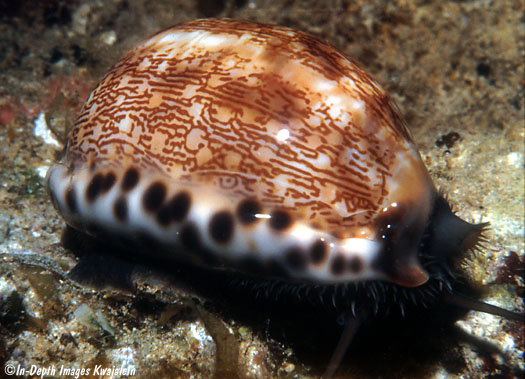
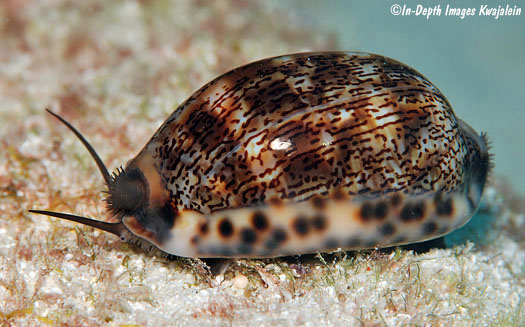
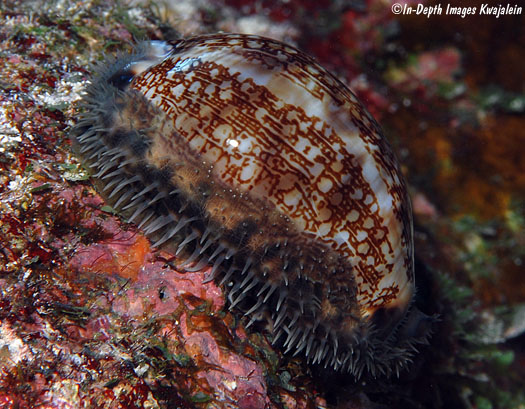
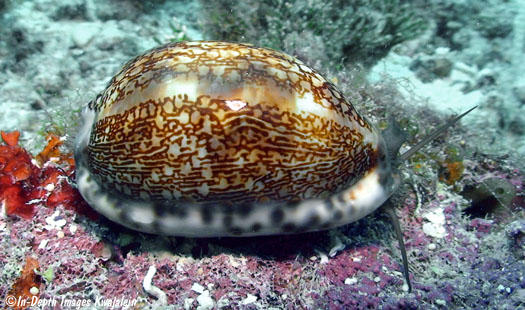
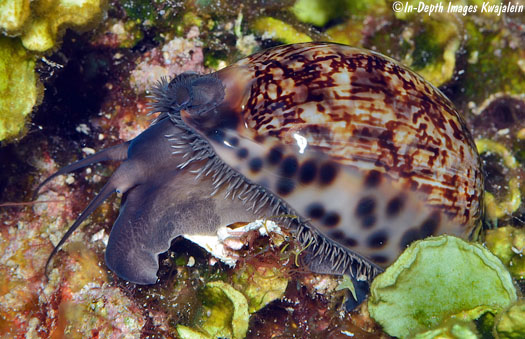
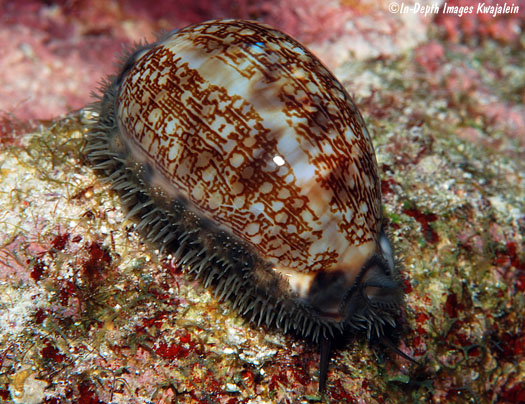
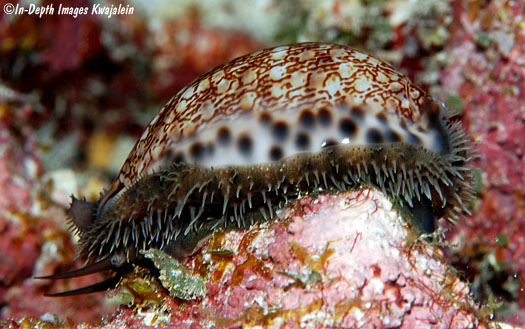
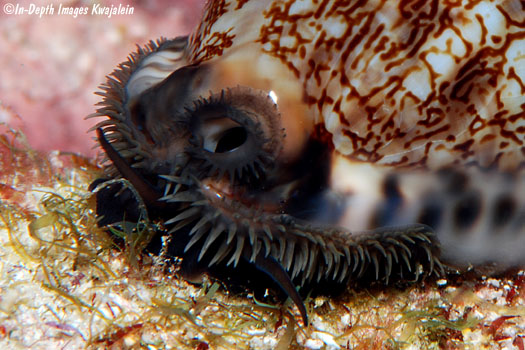
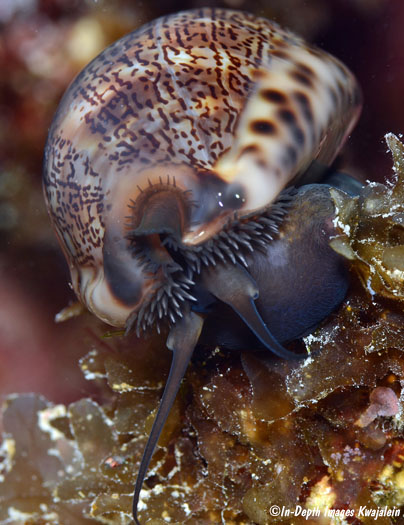
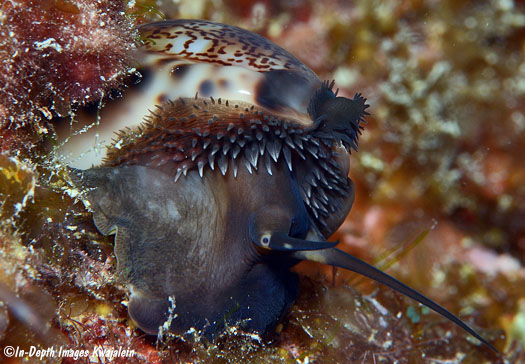
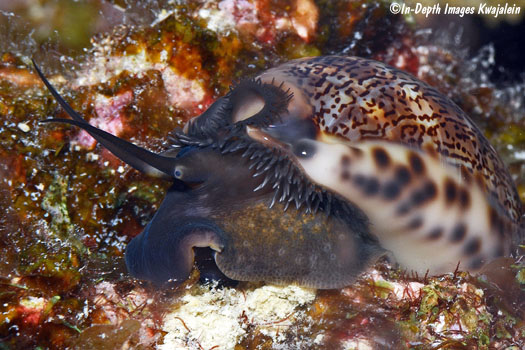
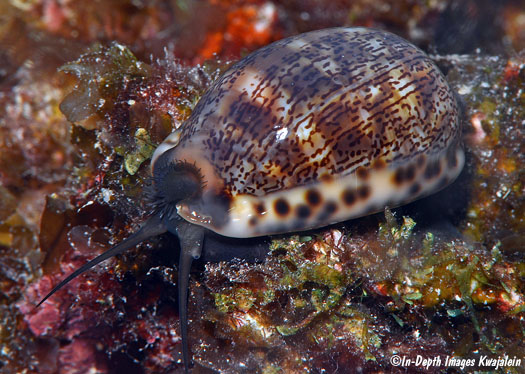
The big reason most cowries hide
is there are predators ready to go for them whenever they can. While this cowry
was exposed for its photo session, a Cheilinus
fasciatus wrasse, which we popularly call "chomper fish,"
came down and grabbed it, intending to have it for lunch. Swinging the camera
at the wrasse caused him to drop the cowry, which was then hidden back under
a rock to guard against further attacks.
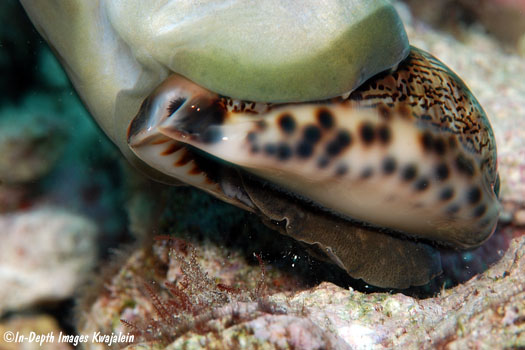
55.3mm, 1971
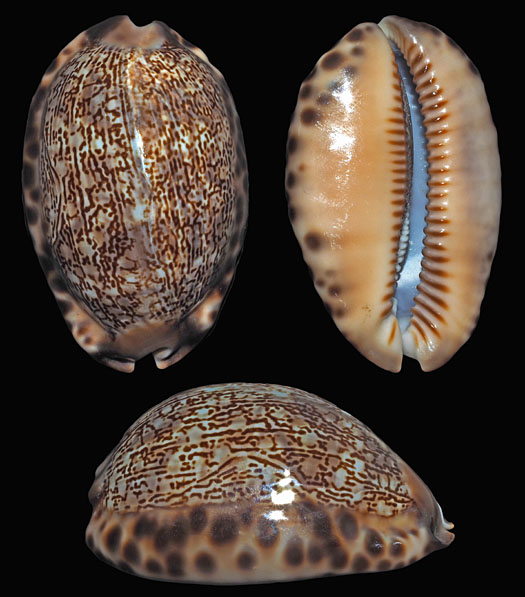
Mauritia arabica lacks
a dark blotch on the posterior end of the shell.
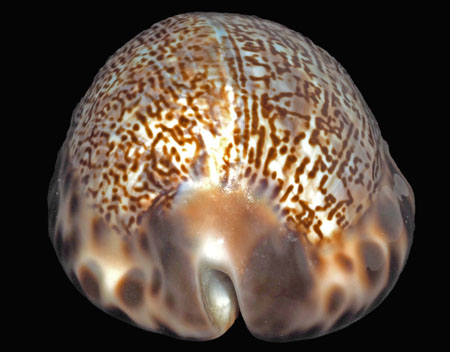
56.05mm, 27 March 2011
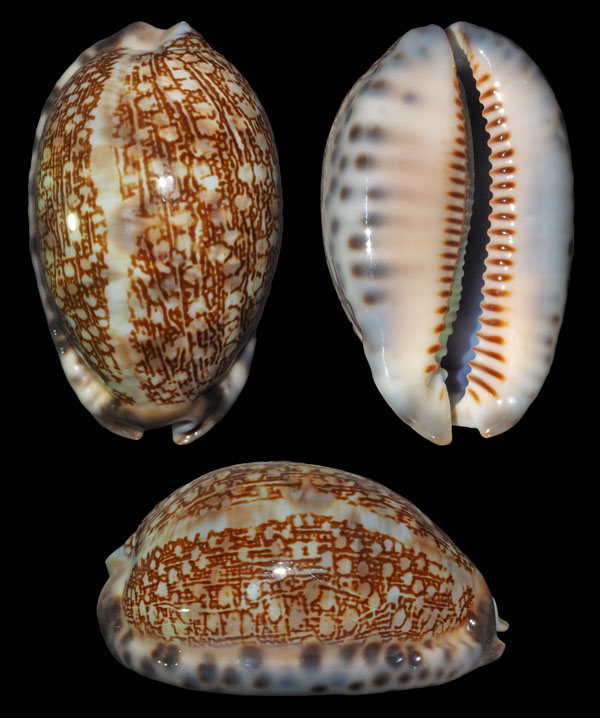
This one is a bit enigmatic. By
its blotched dorsum, I would tend to call it Mauritia
maculifera, but the lack of a columellar blotch rules that out. The
base also looks a bit like Mauritia
depressa, but that species tends to be wider for its length and flatter,
so the marginal color is more easily seen from the top. That really just leaves
M. arabica. 49.15mm, 1983
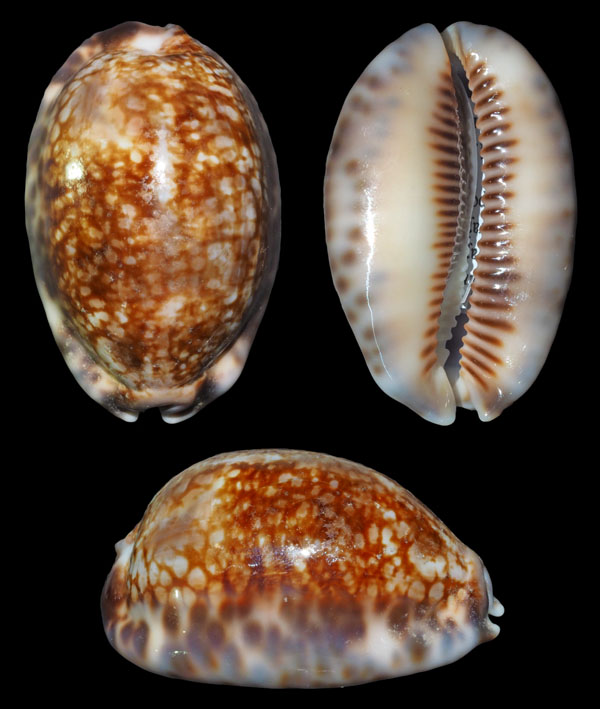
Created
1 April 2008
Updated 2 April 2024
Back to
cowries
Kwajalein Underwater Home

















